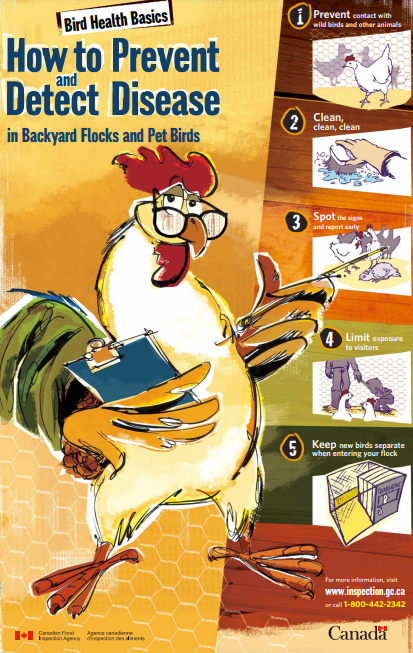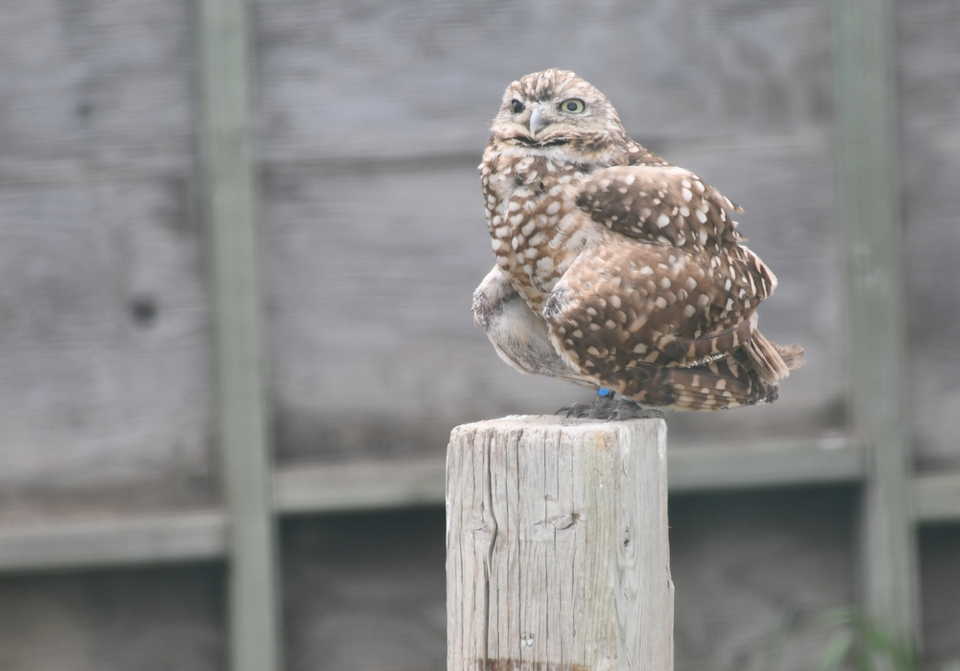With the Province confirming highly contagious and deadly avian influenza (H5N1) detected at two chicken farms the caretakers of the 10 endangered burrowing owls and one short eared owl at the Saskatchewan Burrowing Owl Centre are taking extra precautions to protect the flock.
Like all birds - including pet birds - the burrowing owls are at risk of contracting the virus if they are exposed to it. But fortunately this year a so far cool spring has kept the owls indoors isolating them from birds which may carry the virus.
“We have to be very concerned. As long as the owls maintain in the centre where they don’t have any interaction with wild birds we’re OK and we haven’t put any birds outside yet,” George Fowler general manager with the Moose Jaw Exhibition told MJ Independent.
H5N1 affects wild, farm as well as pet bird populations and it is listed as a high pathogenicity virus in birds which in rare cases may transmit to humans. Transference from birds to humans usually occurs where there is close contact with infected birds or heavily contaminated environments.
“They are all still in their winter enclosure so we feel good and be advised by the vet clinic at the U of S (University of Saskatchewan) to not take the birds out to do any tours at this point due to the risk of possibly coming into contact with the avian flu,” Fowler said.
On April 14th Saskatchewan’s chief veterinary officer issued an order to limit the co-mingling of poultry to reduce the risk of spreading the deadly virus.
The order, in place until May 14, 2022, prohibits the movement to and participation of birds in shows, auctions and agricultural fairs, as well as any other events where birds would be brought together from multiple locations, a release from the Province stated.

This year’s cooler April has the birds still indoors but depending on the weather owls have been put outside by April. The decision to transfer the owls from their indoor winter home to their outdoor summer enclosures varies from year to year.
“We knew a few weeks ago there were problems so we weren’t in a hurry to get outside and it was just yesterday they (U of S veterinary clinic) suggested we shouldn’t even take them out to go on a tour anywhere.”
The veterinary clinic’s suggesting tours be suspended as long as the threat of avian flu is present has so far forced the cancellation of four owl tours to other locations over the next two weeks.
Fowler said the centre has stepped up its bio-security at the Burrowing Owl Centre.
“Shoe cleanliness is crucial. Hand cleanliness is crucial. Clothing cleanliness is crucial. Transmission using feet (is crucial). If you are not coming in direct contact with the actual (infected) bird what you carry around on your feet is very transmissible,” he said.
The threat to the burrowing owls is taken seriously.
“What we are doing is making sure we don’t take (outside) footwear inside. So we are making sure we change footwear at the door. And then wash up.”
Agriculture Canada is making many recommendations to help prevent the spread of avian flu which includes bio-security measures that includes cleanliness plus limiting access to wild birds, other animals and visitors to protect flocks and pet birds.
At the present time the Burrowing Owl Centre is closed to outside visitors as part of their regular annual shutdown from September to the May long weekend. Restricting visitors is one of the recommendations to keep flocks and pet birds safe from contracting the deadly virus.
Asked what would happen if the avian flu was contracted by one of the owls Fowler said the impact would likely be catastrophic for the Centre.
“The risk is that a bird could die from it and they could spread it to the rest of the flock…they might be forced to (euthanize the entire flock to prevent further spread),” Fowler said.
Asked if there was any treatment available that might be given to the burrowing owls - despite the cost - because they are an endangered species Fowler indicated it was unlikely.
“I am not aware of any treatment for it other than make sure they do not get it.”
Although avian flu has been present in the past the last last major breakout in Saskatchewan was 2007 where 50,000 birds in one flock was euthanized with carbon dioxide gas. The present outbreak has so far been detected in 41 premises and impacting 700,000 birds countrywide since December 2021.
Fowler said the threat of avian flu could see the owls indoors and away from visitors for some time depending on how long the outbreak lasts.
“Until we sort of get word from the U of S (veterinary clinic) that is probably safe to put them outside or take them on tour they’ll have to remain indoors.”
Asked if the Centre would be negatively financially impacted by the owls having to remain inside until the threat has passed Fowler said it should see no impact.
“Care and welfare is probably the same as if they were outside and inside.”
At the present time the Burrowing Owl Centre is planning to host a major event to kickoff the opening to visitors but the event could potentially be cancelled if the threat of bird flu continues.
An additional concern is mating and egg laying would have to be indoors if the owls cannot be placed outside.




